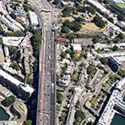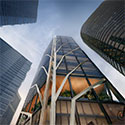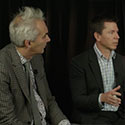Filter by
Note: As this project is under construction, the data is based on the most reliable information currently available. This data is thus subject to change until the building has completed and all information can be confirmed and ratified by the CTBUH.
You must be a CTBUH Member to view this resource.
Salesforce Tower
182 George Street, 37-57 Pitt Street,Circular Quay Tower
Building
Under Construction
2000
office
steel
263.1 m / 863 ft
58
4
86
68,853 m² / 741,128 ft²
Usually involved in the front end design, with a "typical" condition being that of a leadership role through either Schematic Design or Design Development, and then a monitoring role through the CD and CA phases.
The Design Engineer is usually involved in the front end design, typically taking the leadership role in the Schematic Design and Design Development, and then a monitoring role through the CD and CA phases.
Other Consultant refers to other organizations which provided significant consultation services for a building project (e.g. wind consultants, environmental consultants, fire and life safety consultants, etc).
These are firms that consult on the design of a building's façade. May often be referred to as "Cladding," "Envelope," "Exterior Wall," or "Curtain Wall" Consultant, however, for consistency CTBUH uses the term "Façade Consultant" exclusively.
You must be a CTBUH Member to view this resource.
Usually involved in the front end design, with a "typical" condition being that of a leadership role through either Schematic Design or Design Development, and then a monitoring role through the CD and CA phases.
The Design Engineer is usually involved in the front end design, typically taking the leadership role in the Schematic Design and Design Development, and then a monitoring role through the CD and CA phases.
Other Consultant refers to other organizations which provided significant consultation services for a building project (e.g. wind consultants, environmental consultants, fire and life safety consultants, etc).
These are firms that consult on the design of a building's façade. May often be referred to as "Cladding," "Envelope," "Exterior Wall," or "Curtain Wall" Consultant, however, for consistency CTBUH uses the term "Façade Consultant" exclusively.
CTBUH Australia Design Excellence Series: Circular Quay Tower
26 March 2019 - Event
Lendlease Confirmed as Diamond Sponsor
11 July 2017 - Conference Activity

30 October 2017 | Sydney
Circular Quay Tower: Aligning Private and Public Outcomes
Circular Quay Tower is an exceptional example of the private and public sectors working together to transform an area, breathing new life into George Street...
 3XN_Adam Mørk2.jpg)
30 October 2017
Connecting the City: People, Density & Infrastructure
CTBUH 2017 Conference Speakers
The future of humanity on this planet relies on the collective benefits of urban density; reducing both land consumption and the energy needed to construct...

30 October 2017 | Sydney
Circular Quay Tower: Aligning Private and Public Outcomes
Circular Quay Tower is an exceptional example of the private and public sectors working together to transform an area, breathing new life into George Street...

30 October 2017 | Sydney
Circular Quay Tower: The Next Tallest Office Building in Sydney
Circular Quay Tower will be the centerpiece of an urban regeneration precinct that will reshape Sydney’s iconic harbour area and central business district. Taking advantage...

30 October 2017 | Sydney
Interview: Ross Palmer & Gerard Evenden
Ross Palmer & Gerard Evenden of Foster + Partners are interviewed by Chris Bentley during the 2017 CTBUH Australia Conference.
26 March 2019
Join the CTBUH Australia Chapter for their first event of the year, looking at the Design Excellence competition entries for Circular Quay Tower.
Subscribe below to receive periodic updates from CTBUH on the latest Tall Building and Urban news and CTBUH initiatives, including our monthly newsletter. Fields with a red asterisk (*) next to them are required.
View our privacy policy